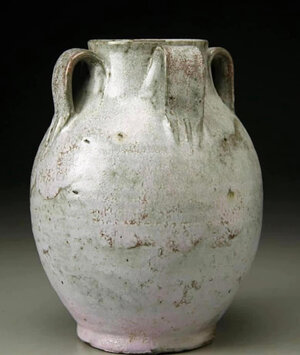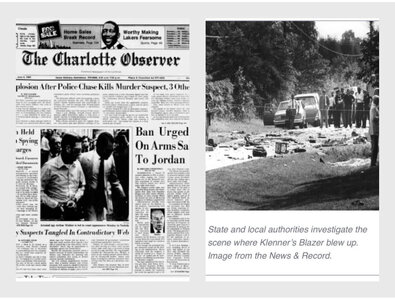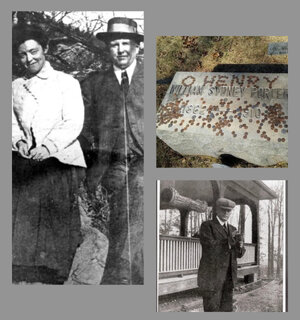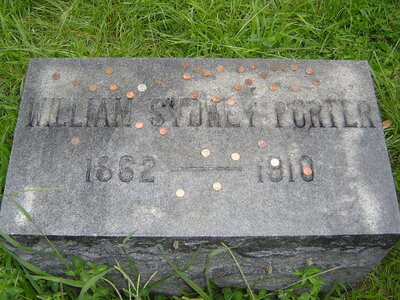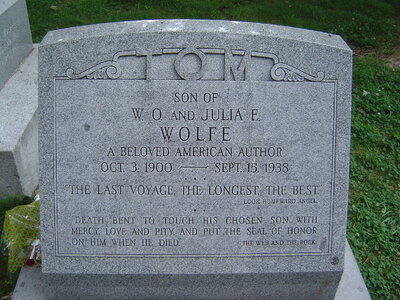From when we first moved to Chapel Hill in the late ‘60’s, my parents were dedicated pottery buyers.
I heard people talk about ‘Jugtown’ from an early age. I went there on short ‘road trips’ from Chatham as a boy but I mostly remember running around outside while my mother and her sisters shopped. (They were perhaps wise to keep this little bull out of the ‘china’ shop) When I graduated from college (the first time) way back in 1980 my parents gifted me a set of reddish-brown dinner plates, bowls, et.al. Being 40+ years back I’ve nothing left to show of that generous and classic present - such things are often wasted on the young but I’m pretty sure those pieces, or most of them, still survive, so durable was their composition. Thrift Shop Treasures, I hope whoever has them knows what they’ve got.
There is a historical connection with the production of jugs in the state that did not come immediately to mind - at least it didn’t automatically occur to me (and it really should have - given my life’s work in two areas). Most of Randolph County’s Jugtowners trace their roots as potters back to the 1700s and in those days their containers were essential for transporting corn made into distilled spirits. Moonshiners and potters were partners up until the Mason Jar gradually replaced the jug in that ‘industry.’
The Jugtowners also have a less known tie to New York City. By the early 20th century traditional ceramics had lost a great deal of its utility but still a flicker of the historic artistry remained. Around 1905 Raleigh artists Jacques and Juliana Royster Busbee were captivated by a plate they found at a flea market and traced its origin to the small town of Seagrove. There they found what survived of the local pottery folk culture. Their North Carolina roots notwithstanding, the Busbees were worldly travelers and split their time living in Raleigh and New York City.
In 1917 Juliana opened ‘The Village Store and Tea Room’ at 60 Washington Square, in the artist hub of Greenwich Village. Bars in those days were not particularly welcoming to women and despite the somewhat high-sounding name, tea rooms were really more of a safe space where women might gather, joined by men, to socialize. The tea might often be spiked and other potent potables were also available. A ‘New York Tribune’ article of July 27, 1919 noted that Busbee’s establishment was rooted in the “habitat of the long-haired men and short-haired women who constitute the race of near-Bohemians known to readers of those lurid tales as ‘Greenwich Villagers.’” This warms my heart.
And so Jugtown met Bohemia and backcountry North Carolina came to the Big Apple through the ingenuity of Raleigh’s Juliana Busbee and soon enough traditional Tar Heel pottery had caught the attention of The Metropolitan Museum and The Smithsonian and the value and beauty of the art took its rightful place alongside other regional folk art.
I’ve wondered often what my mother and her friends saw in the things from Jugtown. I think more than art or design they saw value in the history the objects represented combined in their sturdiness and utility. The stuff from Jugtown ‘Worked.’ Of course they were also ‘pretty.’
#OTD in 1904 Ben Owen was born in Moore County. From a family of potters, Ben teamed with The Busbees at Jugtown (‘23-59) near Seagrove and later his own Plank Road Pottery (‘59-72). The styles created there meshed N.C. and World traditions. Today his grandson Ben III carries on the craft. Master of an Art Form, Potter Ben Owen LINK HERE to current Ben Owen studio w/historic video, narrative, and photographs: History — Ben Owen Pottery
A.R. Cole in Sanford was a frequent stop. He was only open 1-2 days a month (Saturday mornings my brother and I were sleeping in the back of the station wagon as Cole opened at 6:00 or 7:00 am). People lined up for 2-3 hours before he opened.
Wonderful, functional pottery. My parents still have tons of it - some of my favorites are glazed with Crystal Blue Mistake (a medium brown glaze with black specks). They have a custom punch bowl with a matching ladle and punch cups. It’s red. Hardly ever used. The glaze has A LOT of lead in it.
Lots of mugs, jugs, and teapots from Jugtown.
Somewhere in the late ‘70’s/early ‘80’s my parents mostly stopped buying Seagrove Pottery - the house was full.
In 1991, my former wife and I, on one of our earliest dates, went to Seagrove. Her first thought was “Pottery? Why?”
We lucked out and visited on a day that Wedgewood (the china company) was leading 2 busloads of tourists through Seagrove. This meant the buses stopped at 4-5 different potters; AND, each of those potters invited 8-10 other potters to set up and display (and sell) their wares. So, in 4-5 stops we were able to see 30-50 potters.
What’s still great about Seagrove is that many potters still make functional pottery and NOT art - Tom Gray and Dirtworks are two of my favorites.
Don’t get me wrong - plenty of Seagrove potters make art. Look no further than Ben Owens III, grandson of the great Ben Owens. He makes pieces that sell for hundreds and thousands. Some are 5 or 6 or more feet tall.
Seagrove is worth a trip if you haven’t been there.
Last edited:

